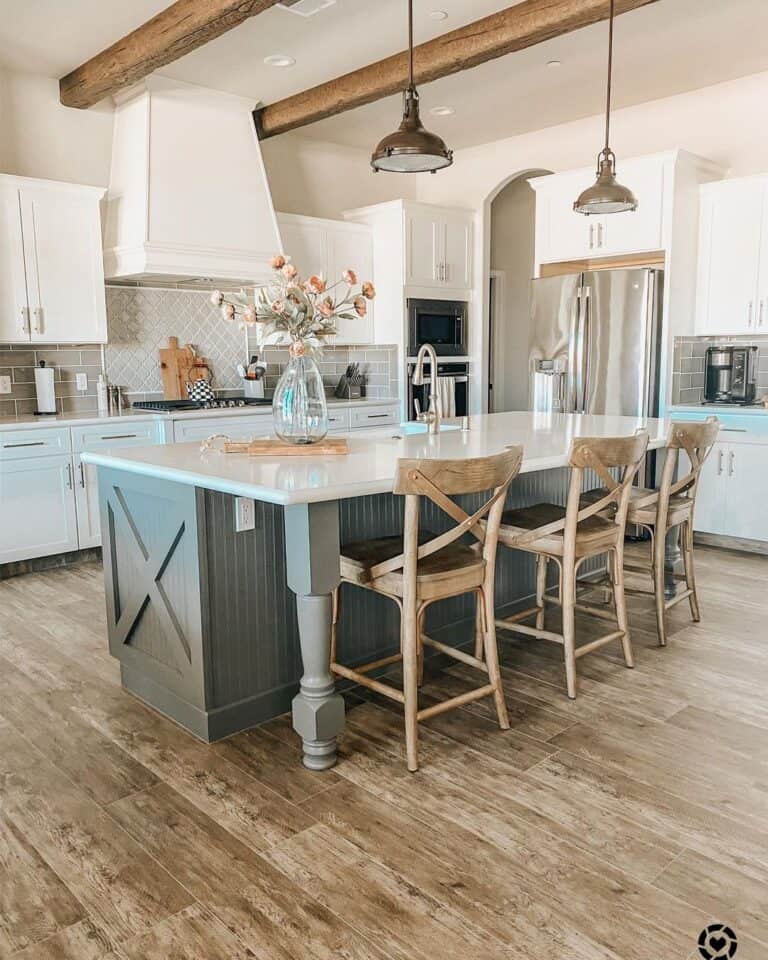Find Durable and Decorative Legs For Kitchen Island Transformations
Find Durable and Decorative Legs For Kitchen Island Transformations
Blog Article
Crucial Variables to Think About When Choosing Legs For Kitchen Island
Selecting the proper legs for a cooking area island includes a mindful assessment of several variables that can considerably affect both functionality and aesthetic charm. As we explore these elements, it ends up being clear that each choice can have far-reaching ramifications for the total kitchen experience.
Material Options
When selecting legs for a kitchen island, understanding the numerous product options is vital for attaining both aesthetic appeal and structural honesty (Legs For Kitchen Island). The selection of material considerably influences not just the longevity of the island but also its general style and capability
Steel legs, frequently made from stainless steel or wrought iron, contribute a industrial and modern feel while guaranteeing toughness and security. These materials are resistant to put on and can support considerable weight, making them excellent for larger islands.
One more option is crafted materials, like MDF or plywood, which can be much more cost-effective while still supplying a variety of surfaces. However, they might not supply the same degree of stability as solid timber or metal. Materials such as acrylic or glass can develop a contemporary look, though they may require extra support to guarantee stability.
Ultimately, the choice of product for kitchen area island legs need to align with the preferred performance and the general style of the kitchen.
Style and Design

When thinking about style, the form and coating of the legs are critical. Tapered legs can give a sense of lightness and beauty, while thicker, a lot more robust legs can convey strength and stability. In addition, the surface-- be it repainted, stained, or natural-- should complement the cabinets and counter top materials to produce a unified look.
Moreover, the design of the legs can additionally reflect individual taste. Personalized or attractive legs, such as those featuring elaborate carvings or unique geometric forms, can work as prime focus, adding character and character to the cooking area. Eventually, the best selection will not only improve capability however likewise raise the visual charm, making the cooking area island a standout function of the home.
Elevation Factors To Consider
Selecting the proper height for cooking area island legs is crucial, as it directly influences both functionality and comfort. The common elevation for a kitchen island generally ranges from 36 to 42 inches, aligning with common countertop elevations.

It is also important to account for users' heights and preferences. Customizing the elevation can make sure a comfy experience for all relative, making the kitchen area island a much more delightful and practical area.
Weight Support
Guaranteeing ample weight support for kitchen area island legs is vital for both safety and security and capability. The kitchen island typically offers multiple purposes, including food prep work, eating, and additional storage space, demanding a durable assistance framework. When choosing legs, it is essential to think about the general weight capability required based upon the island's meant usage and the products that will be positioned on it.
The selection of product for the legs plays a significant duty in their weight-bearing capacities. Solid timber, steel, and sturdy composites typically provide remarkable toughness compared to lighter materials. Furthermore, the layout of the use this link legs-- whether they are straight, tapered, or have a pedestal type-- can influence their ability to disperse weight efficiently across the framework.
Furthermore, the leg placement must be strategically planned to improve stability. Legs positioned at the corners or with a larger base can much better sustain heavier loads. Always consult the producer's specifications relating to tons limitations to guarantee that the legs can sustain the designated weight without jeopardizing safety. In recap, picking cooking area island legs with sufficient weight support is important for developing a risk-free and practical cooking area.
Installation and Upkeep
Correct setup and upkeep of cooking area island legs are important for making sure long life and security. To begin, it is vital to comply with the maker's guidelines during installment. This commonly entails securing the legs to the space station making use of appropriate fasteners, guaranteeing that the legs are level and aligned. Making use of a degree tool can help prevent tottering and boost the general aesthetic appeal of the cooking area island.
As soon as set up, normal maintenance is needed to preserve the integrity and appearance of the legs - Legs For Kitchen Island. For wooden legs, periodic cleansing with a moist towel and application of appropriate timber polish can prevent moisture damages and preserve their surface. Steel legs may call for a mild cleansing solution to remove oil and gunk, adhered to by a dry fabric to stop rust development
In addition, check the legs regularly for indicators of wear or damage, such as cracks or loosened joints. Tightening up screws or screws as required can also extend the life-span of the legs. By sticking to these installment and maintenance practices, house owners can make sure that their kitchen island stays strong and aesthetically appealing for many more tips here years to find.
Final Thought

Aesthetic comprehensibility is critical in picking the design and style of legs for a kitchen island, as these components considerably affect the general setting of the room. Conical legs can supply a feeling of agility and style, while thicker, more durable legs can convey strength and security.Picking the ideal elevation for kitchen island legs is essential, as it directly affects both performance and convenience. In summary, choosing kitchen area island legs with appropriate weight support is vital for producing a practical and risk-free culinary space.
In conclusion, selecting legs for a cooking area island demands mindful factor to consider of different aspects, including material alternatives, design, elevation, weight support, and installation.
Report this page